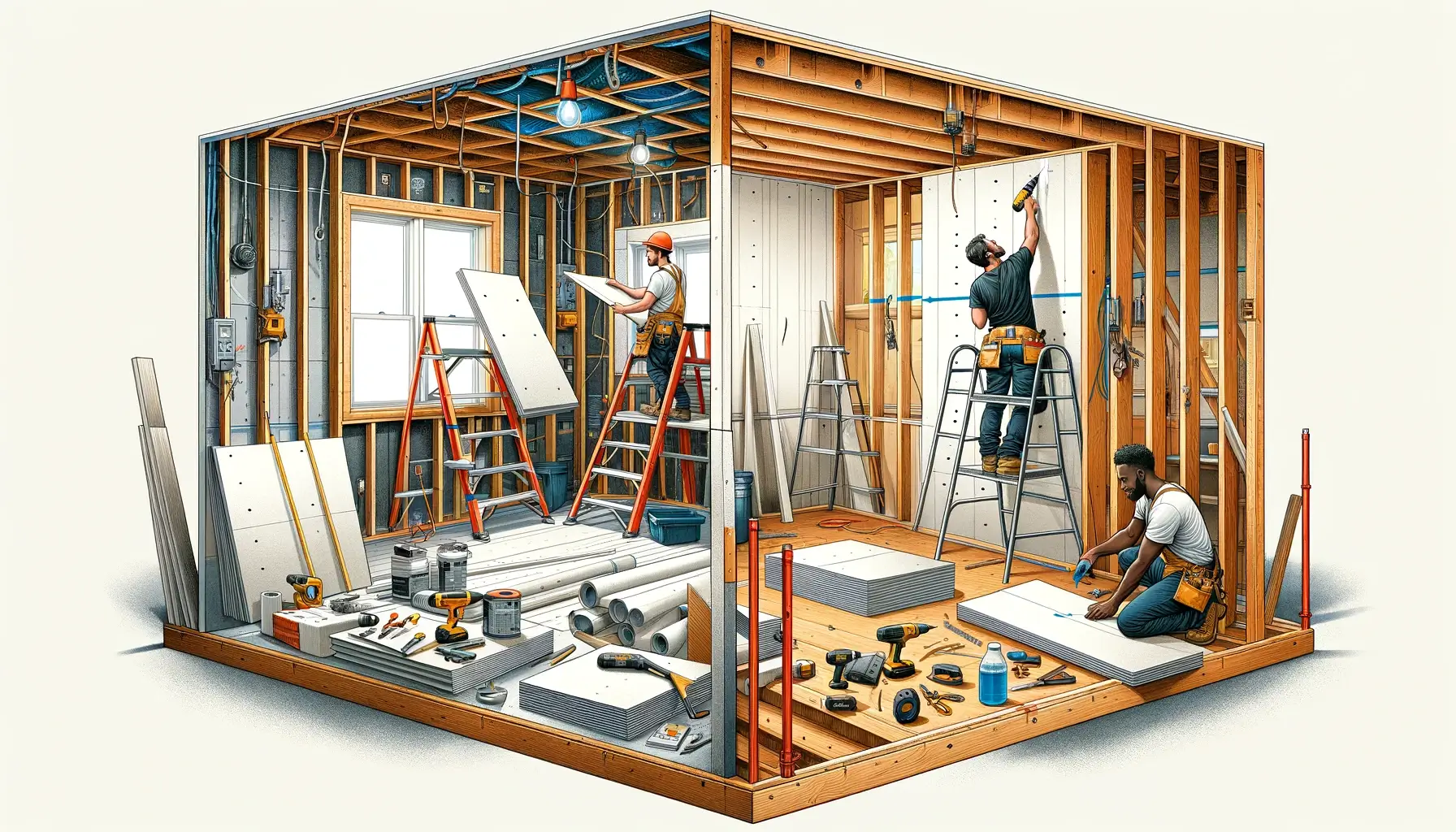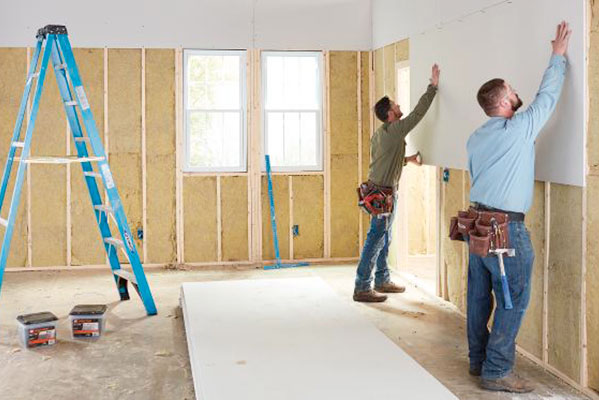Innovative Methods to Drywall Installation in Edmonton
Wiki Article
Everything You Need to Understand About Drywall Installation: A Comprehensive Overview

Comprehending Drywall Basics
Understanding the basics of drywall is vital for any effective setup job. Drywall, additionally understood as plaster board or plasterboard, is a popular construction material made use of to produce indoor walls and ceilings. It includes a gypsum core sandwiched in between two layers of paper. The plaster core gives the needed stamina and strength, while the paper layers safeguard the core from damages and provide a smooth surface area for finishing.
The most typical types include routine drywall, moisture-resistant drywall, and fireproof drywall. Regular drywall is suitable for many interior applications, while moisture-resistant drywall is suggested for areas with high humidity, such as bathrooms and kitchen areas.
An additional key aspect of drywall essentials is understanding the basic dimensions and thicknesses offered. The most common sizes are 4x8 feet and 4x12 feet, with densities varying from 1/4 inch to 5/8 inch. Thicker drywall is commonly made use of for applications that call for raised fire resistance or soundproofing.
Devices and Products Needed for Drywall Setup
To successfully install drywall, it is important to have the required tools and products handy (drywall contractors). These materials and tools are essential for attaining a specialist finish and making sure the durability of the installmentFirst and leading, you will need a measuring tape to properly determine the dimensions of the area where the drywall will be mounted. An utility knife is essential for reducing the drywall to the needed shapes and size. Additionally, a drywall saw can be made use of for making a lot more complex cuts, such as around windows or electrical outlets.
Next, you will require a screw gun or a drill with a screwdriver bit to protect the drywall to the wall studs. Screws, especially drywall screws, are needed for attaching the drywall to the studs. It is necessary to use the ideal length of screws to ensure a safe and secure and flush installation.

In regards to materials, you will require the drywall itself, joint substance for filling out joints and gaps, and tape for strengthening the joints. Sandpaper or a fining sand block will certainly be needed for smoothing out the joint compound after it has actually dried out.
Preparing the Space for Drywall Setup
Prior to continuing with the drywall installment, it is vital to properly prepare the room to guarantee a effective and smooth setup procedure. Preparing the space involves a number of crucial actions that require to be complied with faithfully.To start with, it is crucial to clear the area hop over to these guys of any furnishings, components, or various other things that might block the setup process. This will provide the installers with ample space to function and steer around. Furthermore, it is a good idea to cover the floors and any remaining items with protective sheets or ground cloth to avoid any damage or particles from dropping onto them.
Following, it is vital to inspect the walls and ceiling for any existing damages, such as fractures, holes, or water stains. These concerns need to be fixed before the installation to guarantee a smooth and even surface for the drywall. Any type of loose paint or wallpaper ought to also be eliminated, and the wall surfaces need to be completely cleaned and dusted.
discover here In addition, electrical and plumbing fixtures should be turned off and protected to stop any kind of mishaps or damages throughout the installation procedure. It is crucial to transform off the power supply to the area and remove any kind of electrical cover layers before starting the installment.
Lastly, it is advisable to talk to a professional or refer to neighborhood building ordinance to make certain compliance with safety and security guidelines and obtain any kind of required authorizations before waging the setup. By properly preparing the area, you can ensure a effective and efficient drywall setup procedure.
Step-by-Step Guide to Hanging Drywall
To make sure a successful drywall setup, it is very important to adhere to a detailed guide for hanging the drywall (Edmonton drywallers). This process needs precision and focus to informationFirst, gather all the needed devices and materials, consisting of drywall sheets, an energy knife, a drywall saw, a measuring tape, a drill, and screws.
Next, begin by gauging the measurements of the wall or ceiling where the drywall will certainly be installed. Transfer these dimensions onto the drywall sheets, noting where cuts require to be made - drywall repair. click here for info Utilize a straight side and an energy knife to rack up the drywall along the significant lines, after that snap it along ball game line
Once the drywall sheets are cut to size, they can be hung on the wall or ceiling. Begin at one edge and position the very first sheet up and down versus the framework. Usage screws to safeguard the drywall to the studs, seeing to it to leave a little space in between sheets for development.
Proceed this procedure, functioning your means throughout the wall surface or ceiling. Guarantee that each sheet is level and flush with surrounding sheets. Use a drywall saw to eliminate any required openings for electric outlets or buttons.
Completing Strategies for a Specialist Appearance
Currently that the drywall sheets have actually been effectively hung, it is necessary to use completing methods that will certainly result in a professional and refined look. Achieving a flawless and smooth coating on drywall calls for cautious focus to information and the use of appropriate devices and techniques. By complying with these finishing strategies, your drywall installment will have a refined and specialist appearance.Final Thought
In verdict, understanding the essentials of drywall installment is important for a successful project. With this thorough overview, anybody can with confidence deal with a drywall installment project.The most typical types consist of normal drywall, moisture-resistant drywall, and fire-resistant drywall. Routine drywall is ideal for the majority of indoor applications, while moisture-resistant drywall is advised for locations with high moisture, such as kitchens and shower rooms. Screws, specifically drywall screws, are needed for connecting the drywall to the studs. These problems must be repaired before the installation to guarantee a smooth and even surface for the drywall. By adhering to these finishing strategies, your drywall installation will certainly have a polished and expert appearance.
Report this wiki page